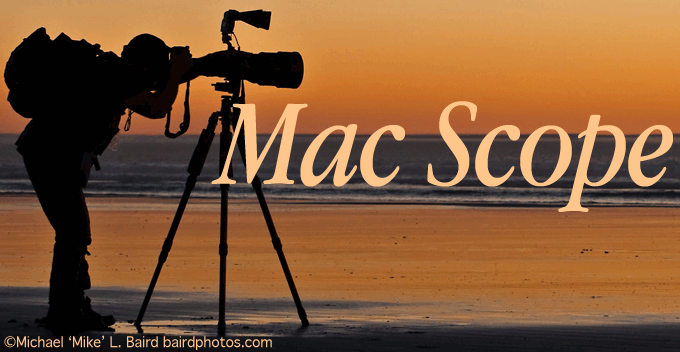2003: If you’ve been paying attention, you already know that Apple released a number of upgrades and applications yesterday. While I’m certain that some people were disappointed, I suspect that Apple hit just the right balance between risk and safety.

Software
On the safe side, we have iLife. While the integration between the apps is certainly whizzy, this is more of an evolutionary change. In fact, this kind of integration is to be expected from Apple, and I suspect that many users have craved these features without actually knowing it.
Final Cut Express also falls into the safer side of the announcements. It’s not exactly a groundbreaking product, but it fits tightly into the product matrix. It’s better than iMovie but not as robust as the full version of Final Cut Pro. It’s right up the middle where the risk is low.
Apple was a little more daring with Safari. Writing a new Web browser is no mean feat, but do we really need one more? Choice is nice, but Chimera [later Camino] works great. In fact, unless Safari introduces tabbed browsing, Chimera will remain my default browser. That’s not to say that Safari can’t improve browsing significantly, but it does mean that Apple has stepped into a world that, even for standards-based browsers, isn’t all that pretty.
Safari is also a bit of a slap to Microsoft. Internet Explorer ships with Mac OS X, but that didn’t stop Steve Jobs from pointing out how slow it is. We might see sparks over this one if Apple decides to drop Explorer from the install lineup. Might Microsoft complain that Apple, a monopoly, is trying to shut it out of the market? We’ll see.
Keynote is also a bit of a daring move. Actually, I prefer to think of it as a daring first step. Keynote may be the first salvo in Apple’s attempt to supplant Microsoft Office on the Mac platform. With full PowerPoint compatibility, there’s no real reason not to use Keynote. And at $99, it really knocks Microsoft hard on the price point. An individual copy of PowerPoint runs $399, according to Microsoft’s online price list.
Now let’s do the math. Microsoft Office is $499 for four applications (Word, Excel, PowerPoint, Entourage). If Apple were to produce an equivalent to each of these products and sell each for $99, it would cost users roughly $100 less to go with Apple. Factor in a discount for buying them as a suite and users could save even more.
I find it unlikely that Apple will leave Keynote as a standalone app. It’s just begging for integration with other office applications. I guess we’ll find out over the next couple of years.
Hardware
Which leaves us with the new PowerBooks. I think Apple is playing it safe here. The two new PowerBooks are certainly appealing, but I can’t see millions lugging around a 17″ laptop. I’m certain, however, that they will be reasonably successful.
The odd one out appears to be the new 12″ PowerBook. I’m not really certain how this is going to go. To me, it appears to try to please everyone and winds up pleasing no one. For people who really need the PowerBooks power, 12″ is just too small. In addition, the 1024 x 768 resolution is, in my opinion, too small to get serious multimedia work done. The 1024 x 768 resolution of the iBook is the main reason I bought a PowerBook G4 instead. The likely combination in a household, I feel, would be a 15″ or 17″ PowerBook for production work and a 12″ or 14″ iBook for more basic tasks. I just don’t think the 12″ PowerBook can find enough of a niche between the high-end iBook and the low-end PowerBook.
Apple has done a good balancing act. With the right mix of risk and safety, Apple is in a good position to weather the current economic storm.

